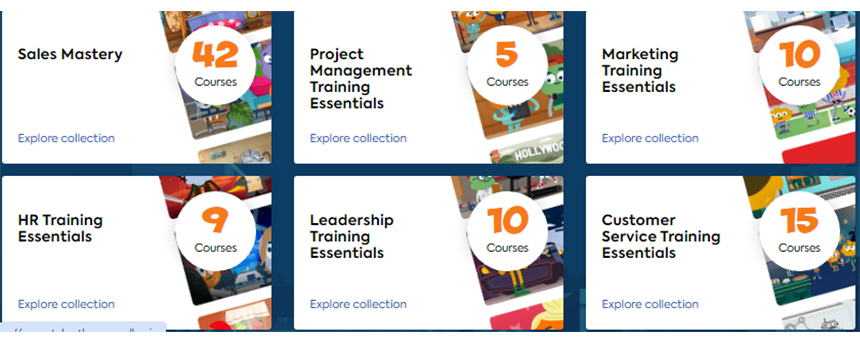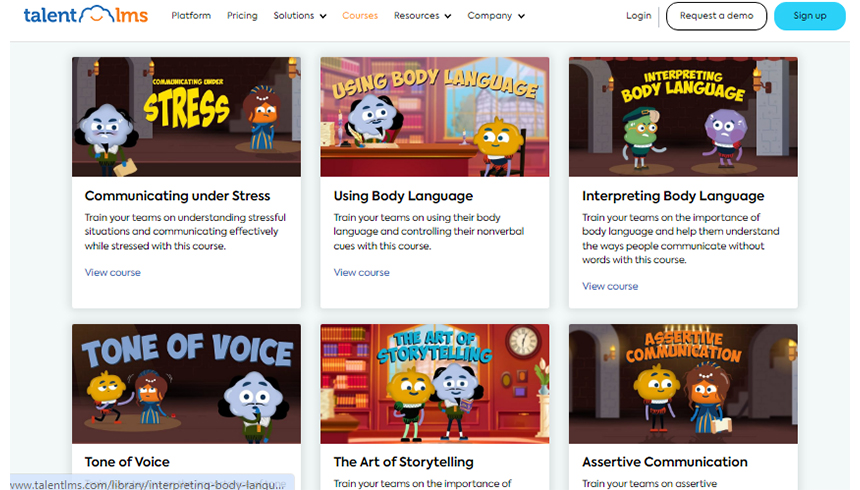
How to Create an Inclusive Work Environment For Employees
In today's diverse and ever-changing workforce, creating an inclusive work environment is important for the success of any organization. An inclusive work environment is one where all employees feel valued, respected, and supported regardless of their race, gender, age, sexual orientation, or any other personal characteristic.
Not only is it the right thing to do, but it also has a positive impact on employee morale, productivity, and retention. In this blog, we'll discuss how to create an inclusive work environment for employees and highlight how TalentLMS, a leading learning management system, plays a crucial role in this journey.
Why Is Inclusion Important in the Workplace?
1. Increased Employee Engagement and Productivity
When employees feel included and valued, they are more likely to be engaged and motivated in their work. This leads to increased productivity and better overall performance. A study by Deloitte found that inclusive teams outperform their peers by 80% in team-based assessments.
2. Attracts and receives Top Talent
In today's competitive job market, creating an inclusive work environment is crucial for attracting and retaining top talent. Employees are more likely to stay with a company that values diversity and inclusion, and they are also more likely to recommend their workplace to others.
3. Better Decision Making and Problem Solving
A diverse and inclusive team brings a variety of perspectives and experiences to the table, leading to better decision-making and problem-solving. This can give your organization a competitive edge and help you stay ahead in your industry.
How to Measure Inclusion in the Workplace
Before you can create an inclusive work environment, it's important to understand where your organization currently stands in terms of inclusion. Here are some ways to measure inclusion in the workplace:
1. Employee Surveys
Conducting regular employee surveys is an effective way to gather feedback and measure inclusion in the workplace. Ask questions about diversity, inclusion, and overall satisfaction with the work environment. This will give you valuable insights into areas that need improvement.
2. Diversity and Inclusion Metrics
Tracking diversity and inclusion metrics can also help you measure inclusion in the workplace. Some metrics to consider include employee demographics, retention rates, and promotion rates for under represented groups.
3. Focus Groups and Interviews
Conducting focus groups and interviews with employees can provide more in-depth insights into their experiences in the workplace. This can help you identify any issues or barriers to inclusion that may exist.
Tips for Creating an Inclusive Work Environment
Now that you understand the importance of inclusion in the workplace and how to measure it, let's discuss some tips for creating an inclusive work environment for your employees.
1. Foster a Culture of Inclusion from the Top Down
Creating an inclusive work environment starts with Leadership. It's important for leaders to set the tone and lead by example when it comes to diversity and inclusion. This means actively promoting and supporting diversity initiatives and creating a safe space for employees to share their experiences and concerns.
2. Promote Diversity and Inclusion
To create an inclusive work environment, it is essential to promote diversity and inclusion in all aspects of your organization. This can be achieved by hiring a diverse workforce, ensuring equal opportunities for all employees, and providing training and development programs that address unconscious biases.

Courses By TalentLMS
TalentLMS offers a range of e-learning courses that can help organizations educate their employees. These courses can cover topics such as unconscious bias, cultural sensitivity, and creating an inclusive workplace. By investing in such training, organizations can raise awareness and promote a more inclusive mindset among their employees.
3. Foster Open Communication
Open and host communication is crucial for creating an inclusive work environment. Encourage employees to share their thoughts, ideas, and concerns without fear of judgment or reprisal. Implement feedback mechanisms, such as regular team meetings, suggestion boxes, or anonymous surveys, to give employees a platform to express their opinions and suggestions.

TalentLMS provides a communication courses that allows employees to collaborate, share ideas, and provide feedback in a secure and user-friendly platform. This feature helps facilitate open communication and ensures that everyone's voice is heard, regardless of their position or background.
4. Encourage Employee Resource Groups
Employee resource groups (ERGs) are voluntary, employee-led groups that bring together individuals with shared characteristics or experiences. These groups can provide a sense of community and support for employees and help promote diversity and inclusion within the organization.
5. Review and Update Policies and Procedures
It's important to review and update your organization's policies and procedures to ensure they are inclusive and promote diversity. This can include things like recruitment and hiring practices, performance evaluations, and employee benefits.
6. Celebrate Diversity and Inclusion
Finally, it's important to celebrate diversity and inclusion within your organization. This can include recognizing and celebrating cultural holidays, hosting diversity events, and highlighting the achievements of employees.
Conclusion
Creating an inclusive work environment is crucial for the success of any organization. It not only benefits employees but also has a positive impact on the company's bottom line. By fostering diversity, implementing inclusive policies, and using platforms like TalentLMS with Tru Art HR, employers can build workplaces that empower every individual to thrive. It's not just about being inclusive; it's about creating a workplace where everyone feels they truly belong.